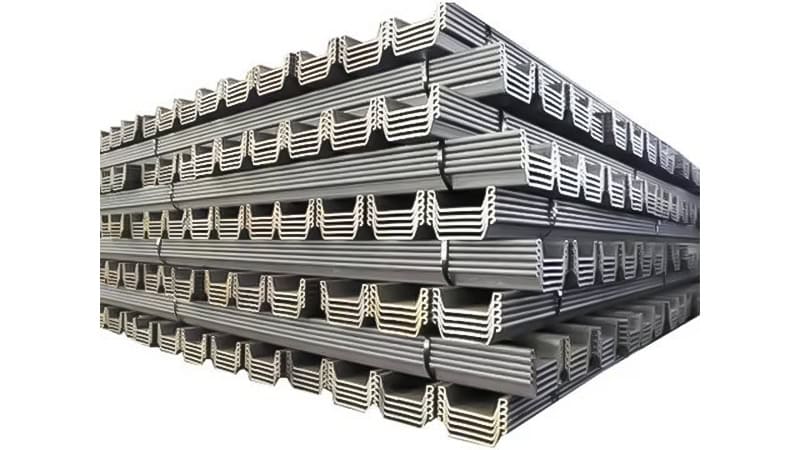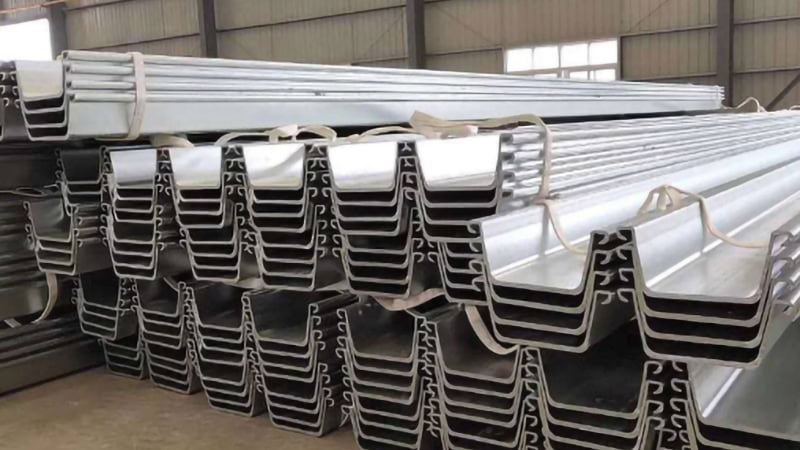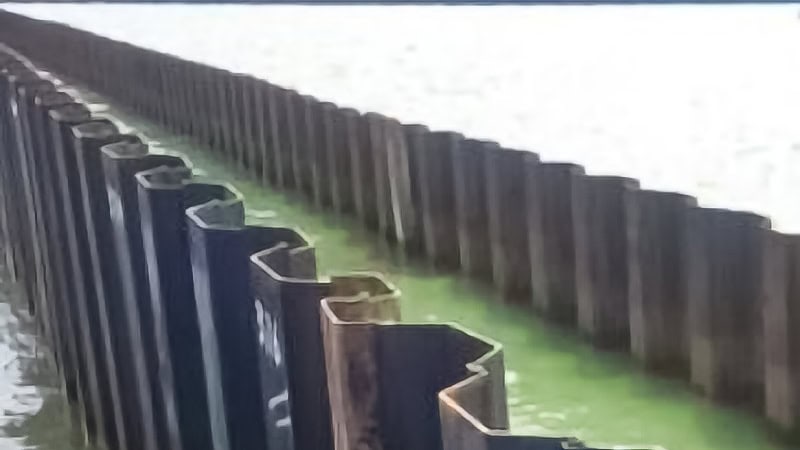
Key Takeaways
- Sheet piles interlock to form a continuous wall with outstanding tensile strength and low permeability, making them ideal for flood-protection foundations and retaining walls.
- Modern steel sheet piles provide an excellent strength-to-weight ratio, enabling engineers to construct long, spanwise cofferdams, gravity cells, and lightly loaded walls using fewer individual piles.
- A quiet, press-in driving method, combined with a reusable alignment frame, shortens installation time, ensures good shear transmission, and allows for allowable rotation corrections—a crucial distinction on urban sites.
- Recyclable steel sheet (rolled in high, corrosion-resistant steel grades) withstands high temperatures and harsh soil chemistry, slashing lifetime cost for permanent or provisional structures.
- Everstar Machinery supplies pile-presses that ensure good shear transmission in U-piles, Z-shaped sheet piles, and flat sheet piles—even when you’re driving around utilities or bridges.
When rivers rise or basements must drop below the water table, contractors need a barrier that keeps soil stable and water out.
Sheet piles solve the problem by forming a watertight, structurally efficient curtain—one that can be extracted later or left in place for a century.
Invented in 1906, Larssen sheet piles are still the most common type worldwide because their looser interlocks allow for some rotation while still transferring load.
Today’s steel sheet piles pair precision-rolled steel with silent presses from Everstar Machinery. The result? Fast, low-carbon walls that meet stringent flood codes, handle high temperatures, and outperform concrete on cost.
This article examines the two primary design characteristics that distinguish Larssen profiles, their diverse applications, and why they continue to dominate modern infrastructure.
What Are Larssen Sheet Piles?

Larssen sheet piles are cold- or hot-rolled steel sheet piles shaped roughly like a wide U with dovetail clutches on each edge. Drive single piles into the ground, and the clutches lock, forming a near-seamless barrier.
Thanks to a favorable neutral axis and slender web, the wall gains high moment capacity without excessive weight.Designers can choose U-piles, z-piles (or z-shaped sheet piles), and flat sheet piles.
U-piles excel in large cross-sectional width; Z-profiles stretch further, perfect for horizontally stretched levees, while flat sheet pile cells assemble into circular gravity cells with huge diameters for cofferdams.
Whatever the format, the most important distinction is the same: create a stiff, watertight sheet pile barrier that lasts.
Steel Sheet Piles: Why Material Matters
Cutting-edge metallurgy gives modern steel sheet incredible tensile strength while keeping weight low. High-performance steel grades resist abrasion, chloride attack, and elevated temperatures near industrial discharges.
According to the Worldsteel Association, steel is 100 % recyclable, allowing extracted piles to return to the melt shop ready to roll again.
Core Benefits of Larssen Sheet Piles in Foundation Work

A wall constructed from steel sheet piles supports stable excavations, high surcharge loads, and uneven soil profiles.
Crews typically position a guide frame, select a press-in driving method, and advance single piles in sequence.
The minimal poundage per meter means smaller cranes, less fuel, and fewer truckloads.
Reducing Project Time and Material Waste
Because each driving method—hydraulic press, jack-in, or low-energy hammer—generates little vibration, adjacent house foundations stay safe.
If a layout changes, contractors simply extract a line of single piles and create a new barricade, reusing the same sections. That reusability is a crucial distinction when life-cycle budgeting is involved.
Flood Protection and Water Retention Applications
Ports, levees, and canal banks depend on sheet piles to hold back water. A successive barrierof steel sheet piles resists hydraulic uplift and stops soil migration.
Where wave forces are high, engineers specify flat sheet pile cells or z-shaped sheet piles to spread load into the neutral axis and maintain good shear transmission.
Permanent vs. Temporary Flood Control Systems
For emergency cofferdams, temporary structures of steel sheet piles drive quickly, then lift out once repairs are finished.
Permanent levees incorporate sealant into joints and utilize heavier steel grades to ensure a century of performance, even in barriers that require low permeability.
Both systems share the same press-in driving method, keeping noise down around occupied house blocks.
Larssen Sheet Piles in Retaining Wall Design
Urban basements, cut-and-cover tunnels, and slope repairs all bank on retaining walls built from steel sheet piles. The slim profile saves real estate, and thestructural efficiency means shallower toe embedment.
Tie rods, wales, or concrete caps finish the system, turning a raw wall into architect-friendly fascia.
Urban Excavation and Limited-Access Sites
Downtown, planners love a silent press-in driving method. With Everstar’s equipment, crews ensure good shear transmission while threading piles beneath skywalks or tracks.
The looser interlocks allow slight misalignment yet hold tight, vital for lightly loaded walls where settlement must stay near the neutral axis.
Steel Sheet Grades, Cost Efficiency, and Lifecycle Value

Life-cycle studies show steel sheet piles outperform concrete in both CAPEX and OPEX.
Faster installation, smaller crews, and little spoil haul-off slash startup costs.
Over decades, minimal maintenance and the option to salvage panels keep TCO low, especially in regions where elevated temperatures degrade concrete faster than steel.
Sustainability and Environmental Benefits
With recycled content over 90%, steel sheet production already reduces CO₂ emissions. Plus, sheet piles disturb less soil, need fewer trucks, and have a smaller footprint, making them an eco-friendly choice.
Extracted piles can also be reused to build temporary structures at another site, demonstrating a circular economy in action.
FAQs
What is sheet piling steel?
A high-strength steel sheet alloy rolled into interlocking shapes that form continuous walls for earth and water retention. Its uniform composition and tight tolerances help ensure effective shear transfer between adjacent sheet piles.
What are the different types of sheet piling?
U-piles, z-piles, flat sheet piles, and composite sheet pile walls made of king beams with infill panels. Each profile offers a different strength-to-weight ratio and neutral axis position to suit varying soil conditions and wall geometries.
What type of foundation is best for a flood zone?
A continuous wall of steel sheet piles with sealant offers the inferior permeability and tensile strength that flood zones demand. This solution creates a resilient barrier that maintains integrity even under high hydraulic pressures and storm-surge cycles.
How deep should sheet piles go?
Embedment is calculated to ensure the centroidal axis remains below the scour depth, typically 1.5 times the exposed height in firm ground. Geotechnical data and operating method constraints ultimately govern final pile length and allowable rotation limits.
What’s the typical installation process for sheet pile walls?
Survey, set the guide frame, select the press-in driving method, drive the piles, cut the tops, and cap them. Quality checks at each stage ensure good transmission and straightness, and that the looser interlocks remain watertight.
What makes Larssen sheet piles more durable than traditional retaining systems?
Their strength-to-weight ratio, good shear transmission, and corrosion resistance outperform masonry or cast-in-place barriers. Engineers can also specify advanced coating systems for environments with high temperatures or aggressive soil chemistry.
Are Larssen sheet piles suitable for permanent water control structures?
Yes. Proper coatings transform steel sheet piles into walls requiring low permeability that last 75 years or more. Periodic inspections and cathodic protection can extend service life beyond a century in many flood-control installations.
Conclusion: Steel Sheet Piles Future-Proof Your Infrastructure
In flood barriers, foundation basements, and containment barriers, Larssen sheet piles excel due to their multiple applications, which combine the primary design characteristics engineers value: watertight seals and high bending strength.
They thrive in aggressive soil, withstand elevated temperatures, and deploy rapidly with Everstar’s press-in systems.
Whether you need a quick cofferdam or a 100-year seawall, steel sheet piles deliver unmatched flexibility and cost control.
Call to Action: Start Your Sheet Pile Project Now
Ready to specify sheet piles on your next project? Contact Everstar Machinery to discuss the optimal driving method and request a fast quote.
Let’s create safe, resilient infrastructure—together with Everstar Machinery.